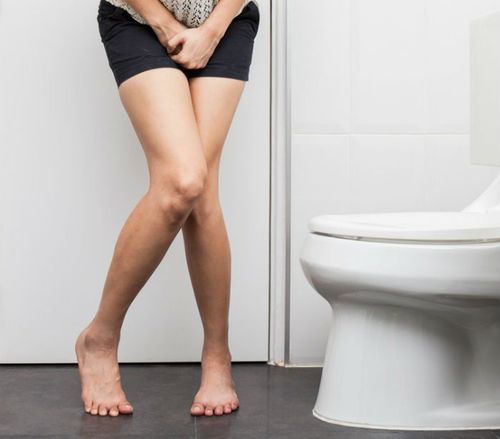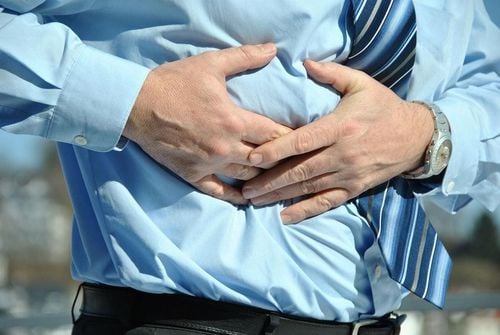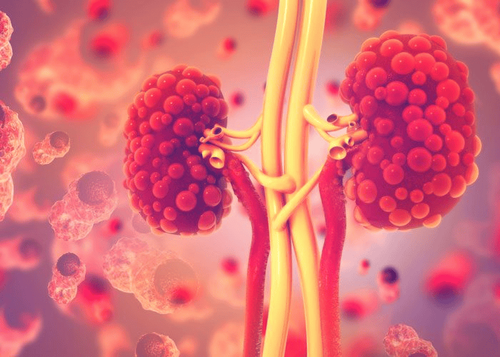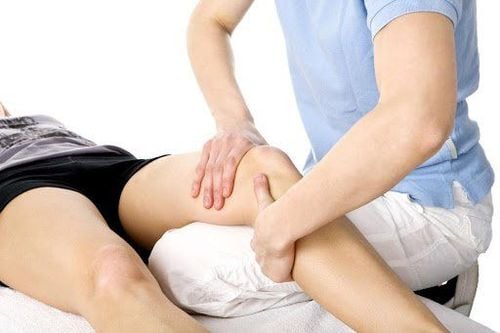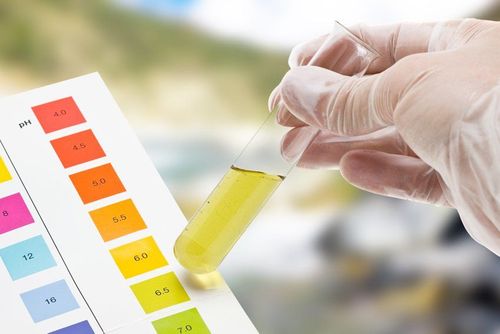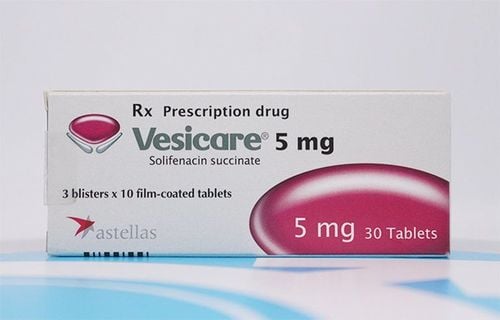This is an automatically translated article.
Posted by Emergency Resuscitation Doctor - Emergency Resuscitation Department - Vinmec Phu Quoc International General Hospital
Incontinence when urinating is a common condition common in the elderly, this condition makes the patient feel uncomfortable. The severity of urinary incontinence ranges from mild, such as urinating when coughing or sneezing, to severe, such as suddenly not having time to go to the bathroom.
1. What is urinary incontinence?
Urinary incontinence is the involuntary expulsion of urine that is enough to cause trouble as well as affect the health of the patient.
About 15-30% of people over 60 have this problem, twice as many women as men. Accordingly, elderly people who are hospitalized, subject to bondage, and house arrest have a higher rate of this disorder. This condition places a heavy burden on the patient, family, and economic impact. Urinary incontinence is common in the elderly, but there are other unidentifiable risk factors, including pregnancy, urinary tract infections, medication, dementia, and immobility , diabetes , estrogen deficiency , weak pelvic muscles and smoking .
2. Urinary incontinence
2.1. Loss of self-control
This condition occurs when the involuntary contractions of the bladder exceed the normal resistance of the urethra and there is also instability of the dorsal bladder muscle. This form is possibly the most common cause of incontinence affecting up to 70% of people with incontinence. The mechanism of action of this body is loss of brain inhibition, involuntary bladder muscle contractions, and loss of normal excretory reflexes. It is characterized by an intense urge to excrete followed by urinary discharge, often before going to the bathroom. The signs and symptoms of this type are inability to reach the toilet in time to urinate, large amount of urine output, residual urine after normal excretion.

Mất tự chủ thúc bách là do bàng quang vượt quá sức kháng bình thường của niệu đạo
2.2. Traumatic loss of self-control
Is the most common condition in postmenopausal women, due to a decrease in pressure in the urethra along with a concomitant increase in intra-abdominal pressure. This condition is also referred to as sphincter insufficiency. This condition manifests as small amounts of urine being expelled when coughing, sneezing, laughing, or other activities that increase pressure in the abdomen. Accordingly, loss of control has symptoms of urine flow when the pressure in the abdomen increases, the amount of urine out is small, urine remains after normal excretion.
2.3. Loss of control over urination
Incomplete bladder emptying may be secondary to atony or hypotonia of the pubictal muscle or to bladder outlet obstruction due to prostate enlargement, urethral stricture, or calculi . Decreased bladder muscle activity may be due to diabetes, lower spinal cord injury, or medication. Overflow incontinence is characterized by a range of symptoms that can be confused with those of stress incontinence. Urine flow is often weak, patients have a feeling that the bladder is not completely empty. Symptoms include: Continuous urinary overflow, pain and tightness in the lower abdomen, residual urine after excreting a lot.
2.4. Loss of functional self-control
Appears in people with normal urinary function but still losing control. The condition may be caused by reduced physical, mental, or cognitive functioning or by environmental limitations. This type of incontinence is commonly seen in hospital settings where the patient is confined or bed-ridden. This form of disease has the following symptoms: Inability or no will to control, urine output is less or more, urine remains after normal excretion.
3. Evaluation of incontinence in the elderly
Evaluation of urinary incontinence to confirm the diagnosis identifies any reversible causes and factors that require intervention for further diagnosis and treatment. A medical history focusing on the nervous and urinary systems, medications taken, and all descriptions of urinary symptoms and associated factors is required, including ongoing bladder monitoring. in a few days.
Examining all the nervous, genitourinary systems, not missing any relevant signs even though completely normal. Finally, exercise stress test by having the patient cough to observe the overflow of urine when the bladder is full, assess the degree of urinary retention in the bladder, if > 100ml, it is more likely to indicate incomplete emptying of the bladder. optical.
In some cases, it is necessary to do urinalysis, urine culture, kidney function test, blood sugar, electrolytes, radiographs of the pelvis and bladder with intravenous contrast, ultrasound, and micro tomography. count . In some necessary cases, it is possible to send to more specialized specialists when there is a problem.

Bệnh nhân cần xét nghiệm nước tiểu để đánh giá mất tự chủ ở người cao tuổi
4. Treatment of incontinence in the elderly
The first is to identify and treat any fixable factors, as the condition is often caused by two or more factors. Disease progression seems to have little effect when treating a single factor found but can make a huge difference in patients that can sometimes be cured. Further treatment will be indicated depending on the type of urinary incontinence, behavioral therapy, surgery, or medication.
4.1. Non-drug therapy
Exercises to exercise bladder, pelvic and hip muscles apply to most types of urinary incontinence. This practice includes behavioral education through the use of compulsive inhibition and scheduled secretion, which, in order to practice, must be cognitively competent. Promoted secretion is the non-pharmacological therapy of choice for patients with urinary incontinence and cognitive impairment, it is scheduled excretion that requires prompting and prompting from caregivers. . Pelvic muscle exercises are a regimen of active, planned pelvic floor exercises to strengthen the urethral vasculature, which is useful for women with stress incontinence.
Non-pharmacological methods of urinary incontinence, including intermittent catheterization, urethral or suprapubic catheterization, external urine collection systems, and protective undergarments. Long-term catheterization should not be seen as an effective treatment option and should be indicated only when all other methods have failed or where the patient already has a skin incision in the area.
4.2. Therapeutic drugs
Postmenopausal women with stress incontinence should receive oral or topical estrogen in postmenopausal doses unless contraindicated. If the patient has an intact uterus, additional progestin should be used. Sympathomimetic agents such as phenylpropranolamine (25-100 mg orally twice a day) or pseudoephedrine (15-30 mg three times a day) are also effective for traumatic incontinence.
Anti-parasympathomimetic drugs such as oxubutinin (2.5-5mg orally 3-4 times a day) propanthelin (7.5-30mg orally 3 times a day), dicyclomid (25-100mg orally/day) and imipramine or desipramine (25 -100mg/day) is effective in cases of compulsive incontinence. Use of anti-parasympathomimetic drugs must be cautious, especially in the elderly because the side effects of the drug can cause confusion, constipation and dizziness.
For people with incontinence, use bethanechol (10-50mg orally 3 times a day) to help empty the bladder more easily. Men with prostatic enlargement can take an alpha-blocker such as prazosin, terazosin, or doxazocin (dose 1-5 mg/day).
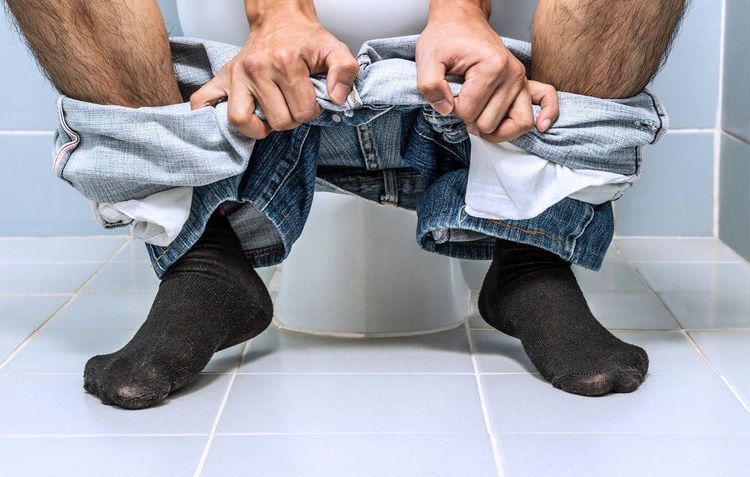
Sử dụng thuốc có thể gây triệu chứng táo bón
4.3. Surgical treatment
Only in some necessary cases, doctors give indications for surgery such as traumatic loss of control with urethral prolapse, surgery with bladder neck lift 80-90% successful. Obstructive urinary incontinence with prostatic hypertrophy is usually well treated with prostatectomy. Impulsive incontinence and instability of the pubic bladder muscle are unsuccessful in medical treatment, often with cystoplasty with good results.
Vinmec International General Hospital is one of the hospitals that not only ensures professional quality with a team of leading medical doctors, modern equipment and technology, but also stands out for its examination and consultation services. comprehensive and professional medical consultation and treatment; civilized, polite, safe and sterile medical examination and treatment space.
Customers can directly go to Vinmec Health system nationwide to visit or contact the hotline here for support.




